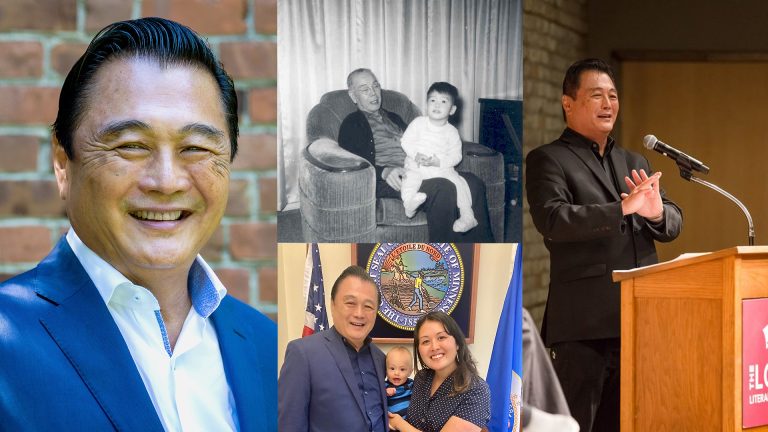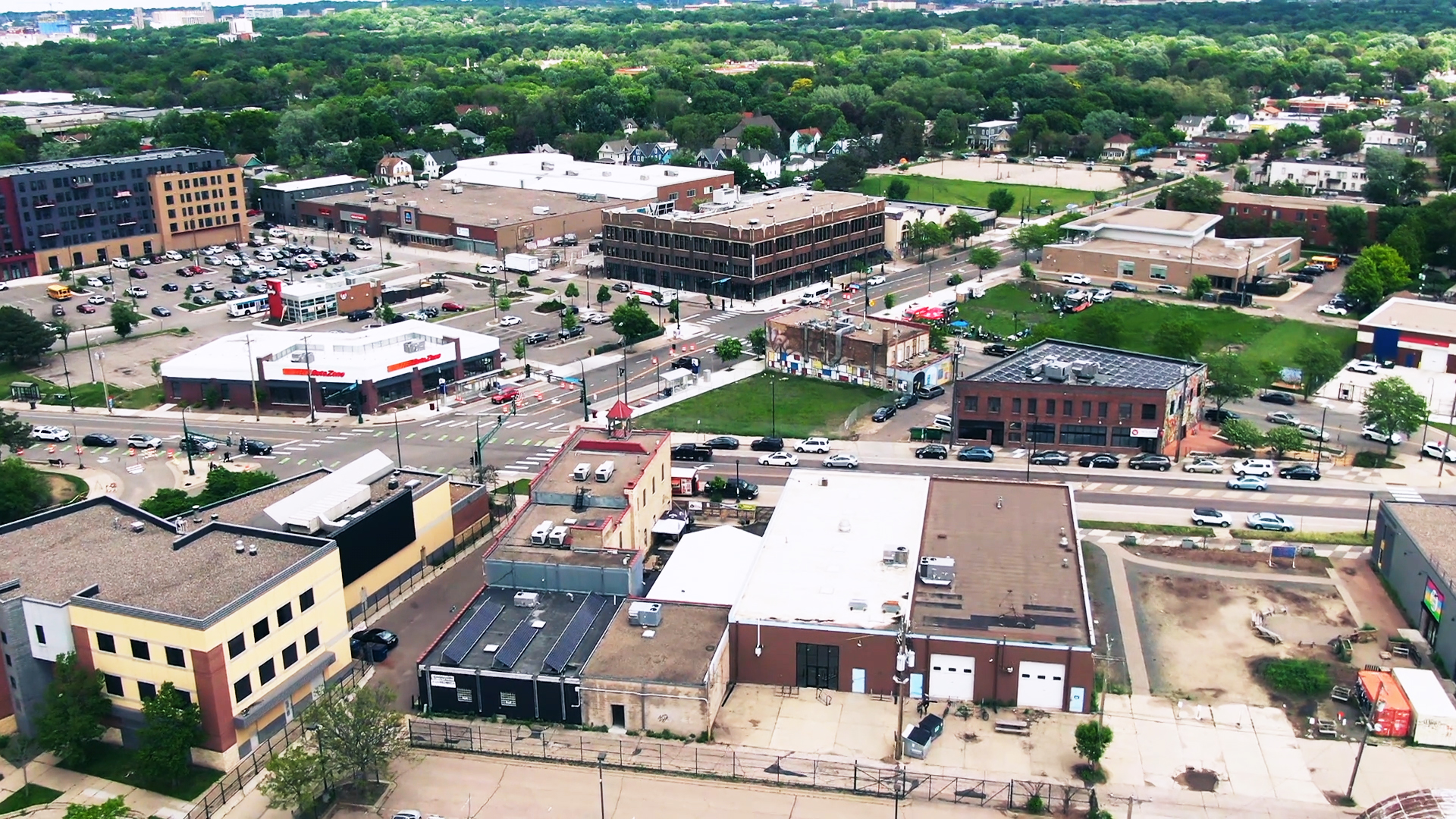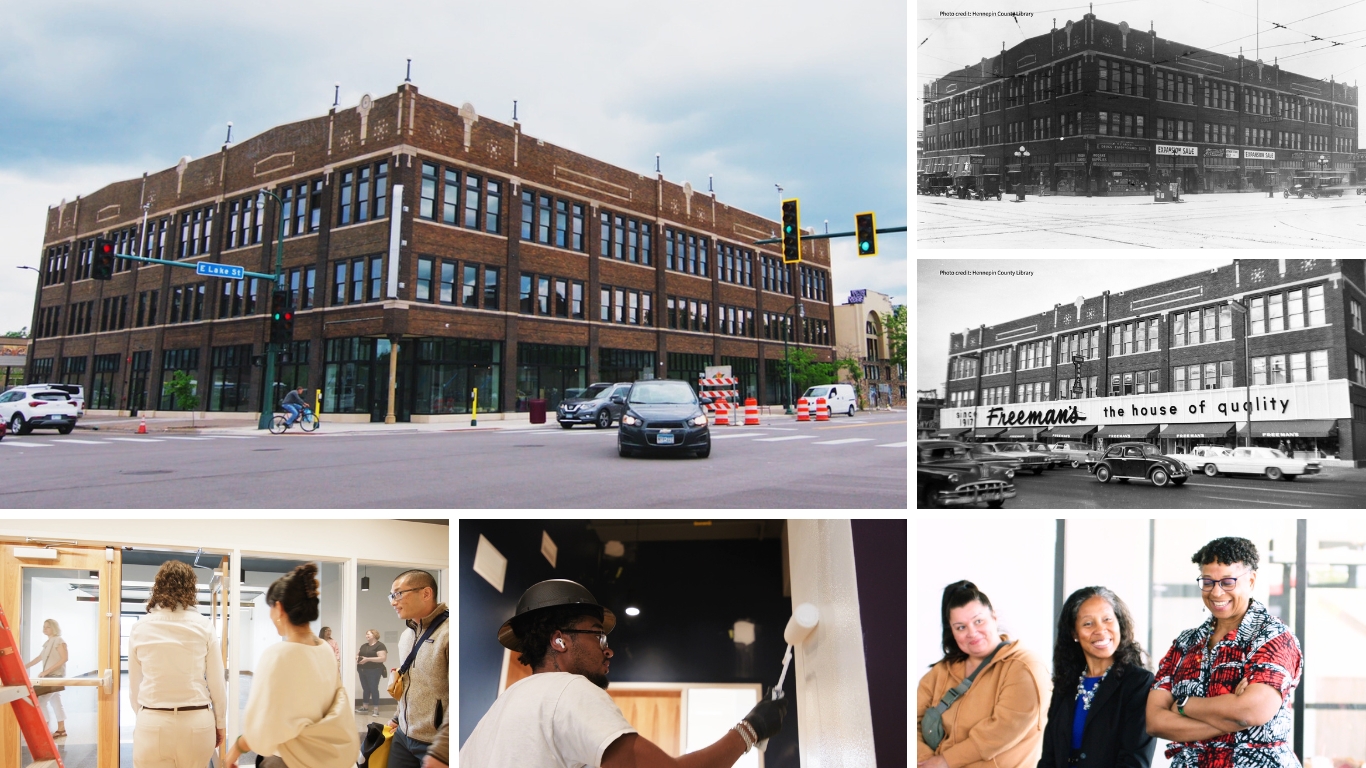
ምድብ:የውጤት ታሪክ12 ደቂቃ ተነቧል
ምድብ:የውጤት ታሪክ12 ደቂቃ ተነቧል
Downtown Longfellow is having a renaissance. In June, The Historic Coliseum Building in South Minneapolis reopened with a new, inclusive purpose. In a collage of co-inspiration and shared ownership, the Black-led reconstruction of the former Freeman’s Department Store demonstrates a collaborative approach to community development that is responsible in vision, clear in mission, and pragmatic in its use of resources. Punctuated by new sustainable architectural features, the 80,000-square-foot facility boasts historic terrazzo floors, lofty ceilings, and bright windows. After the civil unrest in 2020 following the police murder of George Floyd, the Coliseum is helping bring new life to Minneapolis’ East Lake Street.
On Juneteenth (June 19, 2024), the national holiday celebrating Black emancipation from enslavement in the United States, the Coliseum‘s grand opening will take place in conjunction with the Soul of the Southside block party. By joining forces with Arbeiter Brewery, Moon Palace Books, እና Hook and Ladder Theatre, the Coliseum opens its doors with a celebration that centers Blackness, kinship, and community. This Black-led project reveals a renewed neighborhood securing its relationship to racial and cultural equity.
Video by Line Break Media.
Native youth-serving organization MIGIZI recently opened its new doors a few blocks west, and የፓንገር ዓለም ቲያትር is now working to build a new theater and outdoor community space, too. The Coliseum also neighbors the East Lake Library and several community legal and medical resources.
In this new chapter for the neighborhood, the Coliseum models an exciting future role for Community Development Financial Institutions (CDFIs) and initiatives that center community-based cultural and economic visions. McKnight grantee partner Redesign, Inc. is a place-based nonprofit that develops affordable housing and commercial real estate, invests in entrepreneurs, and creates living wage jobs to build economic justice and community wealth in South Minneapolis.
Following the civil unrest, Redesign’s team took action to protect the Coliseum from demolition after it burned three times in the weeks after Mr. Floyd’s murder, holding an eye toward a newly-imagined future for the iconic building. Taylor Smrikárova, Redesign’s Real Estate Development Director and project lead for the Coliseum restoration, highlights the organization’s dedication to creating a welcoming environment and supporting sustainable economic growth in the neighborhood, with a focus on local entrepreneurs and wealth-builders who are Black, Indigenous, and people of color. As Redesign took over the 107-year-old fire-damaged building, Smrikárova noted Redesign’s role as a listening partner for community members, recognizing that the neighborhood was “living through trauma well past the actual week that events took place.”
Bringing this distinctive but charred building back to life was a tremendous effort, requiring deep–and creative–cross-sector collaboration. Redesign worked together with a range of organizations and programs to fund the project, notably the የማህበረሰብ አውታር ማህበረሰብ ማእከል (MCCD), a McKnight grantee partner who helped co-owners navigate corporate real estate challenges, and the Lake Street Council’s redevelopment initiative. The purchase and renovations were expensive and expansive. The hands-on developers leveraged philanthropic support, diverse CDFI connections, tax credits not available to private developers, and Property Assessed Clean Energy (PACE) financing to maximize energy efficiency and renewable energy through long-term loans.
“We are proud to support the revitalization of the Coliseum building, a landmark that has witnessed the vibrant cultural and economic life of East Lake Street for decades,” Marcq Sung, Senior Program Officer at the McKnight Foundation says. He adds, “The complicated financial structure is typical of many nonprofit projects. But what’s more remarkable is that in the Coliseum there is the alignment of talent, funding, and creativity. This project is not only about preserving a historic asset, but also about empowering the local community to shape its own future. The Coliseum building represents the resilience, creativity, and diversity of the people who live and work in this area, and we are honored to be part of their vision.”
Sung says the Coliseum aligns with McKnight’s Building Community Wealth strategy, “which seeks to advance equitable development in Minnesota through inclusive and innovative ownership models that align public and private partners.” The Coliseum’s equity framework extends beyond property procurement to affordable leasing. As a cultural and economic hub, it prioritizes racial equity and the incubation of Black, Indigenous, and people of color-led (BIPOC) businesses.
Longfellow’s history as a multicultural corridor is long-standing. This South Minneapolis neighborhood has long been a node for Indigenous, Black, Latine, and Northern European communities, and has played a significant role for immigrant neighbors. An active participant in the Mapping Prejudice project, Longfellow participates in the Free The Deeds city-wide public art campaign. Even with a painful history, the roots of coalition-building with an ethic of racial equity run deep in this place.
The Coliseum is slated to house Divas for Social Justice, whose mission is to empower and inspire youth living in underserved communities to use tech and visual arts. It will also feature a new restaurant, Lagniappe, እና Du Nord Cocktail Room.

Coliseum co-owner Shanelle Montana, who is also the owner of Lagniappe and Du Nord Cocktail Room, shared, “One of the words that kept coming up for me was sustainability. And not simply a green, clean space, but sustainability throughout the cultural and neighborhood space. Thinking about what we are doing in this building being able to last and to provide reinvestment into this particular corner of Lake Street.”
The building redevelopment prioritizes sustainability in alignment with the City of Minneapolis’ 2030 Climate Equity Commitment. According to co-owner and project architect Alicia Belton of Urban Design Perspectives, “Preserving a building is one of the most sustainable things that you can do.” Getting into the specifics, Belton says, “We’re not carbon neutral yet, but we have planned those kinds of things into the building.” Solar was planned into the infrastructure of the building to provide clean electricity. The co-owners are also digging deep to add climate-friendly heating and cooling. “The aquifer thermal energy system we are building on a different site nearby, and [the Coliseum] will plug into that system when it’s complete,” Redesign’s Smrikárova shares.
የ aquifer thermal energy storage (ATES) system, which will be built at the former U.S. Bank site Redesign is redeveloping at 2800 East Lake Street, will use wells to tap into the steady 50-degree temperature of the underlying aquifer’s water, using heat exchangers and heat pumps to either cool or warm buildings connected to the system. The Coliseum will be one of the first properties to connect to the network, which will also support future structures added to the site, helping to expand the area’s transition away from natural gas. Once complete, it will be the nation’s largest urban aquifer-based heating and cooling system. While popular in Europe, ATES has only recently been gaining traction in Minnesota, with a new system serving downtown Rochester, a recently completed system at the Steamfitters and Pipefitters Local 455 union in Saint Paul, and two systems under development at የቅዱስ ጳውሎስ የሕዝብ ትምህርት ቤቶች.

Belton described the Coliseum’s basement and three floors as a tool of service for local businesses providing co-working space, and new offices nested in the once historic ballroom. It also has event areas for celebrations like weddings and corporate retreats, and a first-floor mix of restaurant and retail options. To further energize future tenants and guests, the co-owners incorporated inclusive and accessible design elements like lactation, prayer, and meditation rooms in their layout, as well as ablution stations for foot-washing in their restrooms.
A common dream among the Coliseum’s co-owners is to create a building where their businesses can flourish while creating a welcoming, inclusive, community-centered space that makes more possible for BIPOC wealth-builders and strengthens the Downtown Longfellow community. The Coliseum’s leasing program is bringing that dream to life with 25 affordable leases. Co-owner Janice Downing of Common Sense Consulting is excited about filling the business spaces with those who are “othering, not others,” emphasizing the sense of community possible among those who don’t identify as mainstream “to get into the building and stay in the building.”
The new sign on the building’s side is designed by Sharp Sign Co. and features the “Du Bois” typeface based on W.E.B. DuBois’ data visualizations, displayed at the 1900 World’s Fair in Paris. While under construction, the Coliseum building was wrapped in a powerful combination of public art from local artists. Words and images from poetry forces like Isha Camara, Marcie R. Rendon, SEE MORE PERSPECTIVE, እና TruArt Speaks stood alongside local art curated by fiveXfive Public Art, a temporary reflection of the multiracial and multicultural neighborhood that served as a reminder of the building’s history and an inspiration for its future, solidifying the community’s collective vision of the Coliseum’s renaissance. Today, a powerful mural from Kada Creative that co-owner and lead architect Alicia Belton says serves as “a bright light of belonging that elevates the rich history of this diverse community while expressing a sentiment of love, hope and healing."
This reconstruction is a soulful transformation that represents a sustainable, collaborative, and impact-driven investment in BIPOC-led businesses and wealth-building. In this new age, the story of the Coliseum is a reminder to all that investing BIPOC-led community leadership is an investment in creative cultural preservation, equitable wealth-building, and stronger local economies.
This 21st Century revitalization of a historic landmark is a significant cultural and sustainability milestone. If more developers, foundations, and businesses follow the model the Coliseum has set, the area’s history of red-lining and decades of disinvestment could be repaired. As a new community touchstone, the Coliseum is refreshing evidence that East Lake Street is on the rise, with the potential for far-reaching impact. “This project has been a labor of love. It has incredible fruit,” shares Downing. “From the ashes rises the phoenix.”